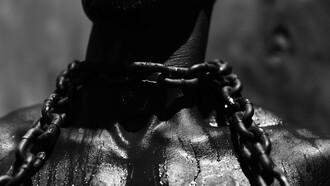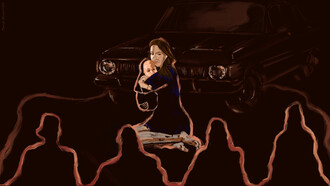Others have made the point that America has a caste system, but no one has made it as effective as Isabel Wilkerson. By a close comparison between the US caste system and those of India and Nazi Germany and weaving the evidence from decades of sociological scholarship with the journalist’s expert feel for the telling example, her own personal experience as a member of the dominated caste, and exceedingly fine writing, this Pulitzer Prize winner shows how a social construct called race, based principally on skin pigmentation--one that has absolutely nothing to do with the capabilities of people--has imprisoned both the dominated and the dominant castes of the United States.
Up until the civil rights in the 1950s and 1960s, the US South was pretty much like a Nazi concentration camp for Blacks, one where torture, murder, and lynching were the routine rewards meted to those who “stepped out of caste.” Moreover, the South may have lost the Civil War, but it won the peace by exporting its caste system to the North. Lynching by mobs of Southerners may have faded from the headlines, but legalized lynching by the police has become an institution throughout the United States. Police killing and mass incarceration have become the main weapons of keeping blacks “in their place.”
Whites have been so programmed to their caste behavior towards the dominated caste that much of this gets expressed unconsciously and unreflectively. “No one escapes its tentacles,” she writes. Wilkerson makes the provocative suggestion that the recent rise in deaths among middle-aged white Americans could be related to the sense of existential threat felt at the lower rungs of the dominant caste at the economic and political gains made by Blacks in the last few decades, including the election of a Black president.
The election of 2016 that brought the brazenly racist Trump to power is, in her view, a major step forward in a caste counterrevolution that has been mobilized by the sense of impending doom represented by 2042, when the Bureau of Census projects that whites will become a minority. As the US moves towards that date, one historian tells her, “The real question would be, given the choice between democracy and whiteness, how many people would choose whiteness?”
Not surprisingly, Wilkerson’s approach has stoked several controversies. One of them is her comparing the situation of Black people in the US to that of Jews in Nazi Germany. Those raising this criticism assert that there is nothing that can compare to the genocidal persecution of the Jewish people, and Wilkerson’s equation of the two experiences takes away from the uniqueness and significance of the Holocaust. There is, however, nothing in Wilkerson’s narrative that can be construed as detracting from the significance of the Holocaust, nor does she engage in a game of “comparative victimhood.” To her, Nazi exterminationism, slavery, and the Indian caste system have all been profoundly evil. Period.
Perhaps a more valid criticism is that Wilkerson makes her case for the overwhelming power of caste so effectively that this undercuts her desperate hope expressed at the end of this profoundly disconcerting book, that more people from the dominant cast would be “awakened” to empathy and compassion and escape the “tentacles of caste.” But others would counter, perhaps, that really is the case, that it is next to impossible for white Americans to escape the tentacles of caste since slavery of African-Americans was one of the foundation stones of the United States, the other being the genocide of Native Americans. Can one really escape the “original sin” of one’s society?
Be that as it may, as with climate change, America is running out of time to head off a violent racial upheaval; indeed, this may even take place before the climate cataclysm.















